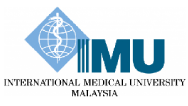The pH of very dilute solutions of weak acids – a calculation involving the application of numerical skills to the solution of a cubic equation
Author: Peter Michael Barling
ABSTRACT
This paper presents the solution to a calculation of the pH of a very dilute solution of a weak acid, taking into account the effect of the hydroxonium ions generated from the ionization of the acid on the ionization of water, also a very weak acid. To be solved successfully, this calculation involves the concepts of conservation of charge, pH, equilibria and the application of the general solution to a cubic equation. Such an exercise requires the application of skills in algebra, and can provide a core of understanding that can prepare advanced students for many different sorts of calculations that represent real-life problems in the chemical sciences. A programme is presented in C++ which enables the work of students to be individualized so that each student in a class can work through a slightly different pH calculation, in such a way that a class supervisor can quickly check each student’s result for accuracy. This exercise is presented as a potential means of enabling students to undertake and master similar types of calculations involving the application of complex algebra to problems related to equilibria and solution dynamics.
Keywords: pH, weak acid, conservation of charge, equilibria, cubic equation.
Citation: IeJSME 2014 8(2): 24-29

